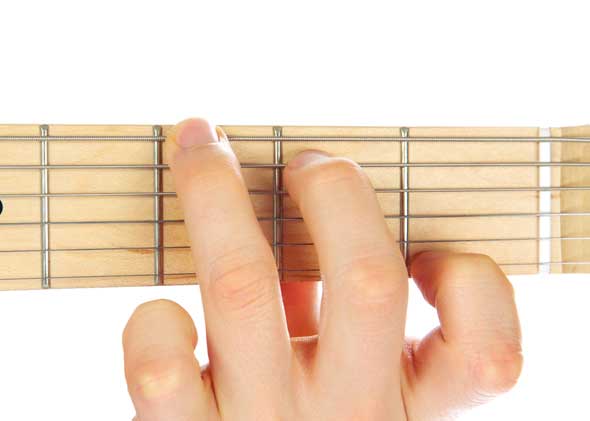
The Pivot
Once you have learned the C chord shape, practice changing between C and G, and also C and D7. When changing between the C and D7 chords, do not move your first finger as it is common to both chords. The first finger acts as a pivot around which the other fingers move. This will make the chord changes easier. Practice slowly and evenly and count or tap your foot as you play to help you keep time. Use the slide finger (3rd finger, 1st string) when changing between G and D7. The use of pivot and slide fingers always makes a chord change sound smoother. For this reason, it is important to get into the habit of using them wherever possible.
The following chord progression contains the three chords you have learned so far. There are four quarter note strums in each bar, as indicated by the rhythm pattern.
Rhythm Pattern



G Seventh Chord

D7


To play the G7 chord, place the first, second and third fingers of your left hand as shown in the diagram. Strum all six strings.
The Common Time Signature (Q)

This symbol is called common time. It means exactly the same as *.
Rhythm Pattern

After you have played through the progression twice, end with a single strum on a G chord.

Rhythm Pattern

This example uses all four of the chords you have learned so far. Notice that the rhythm pattern here contains two quarter note strums and a half note strum.

